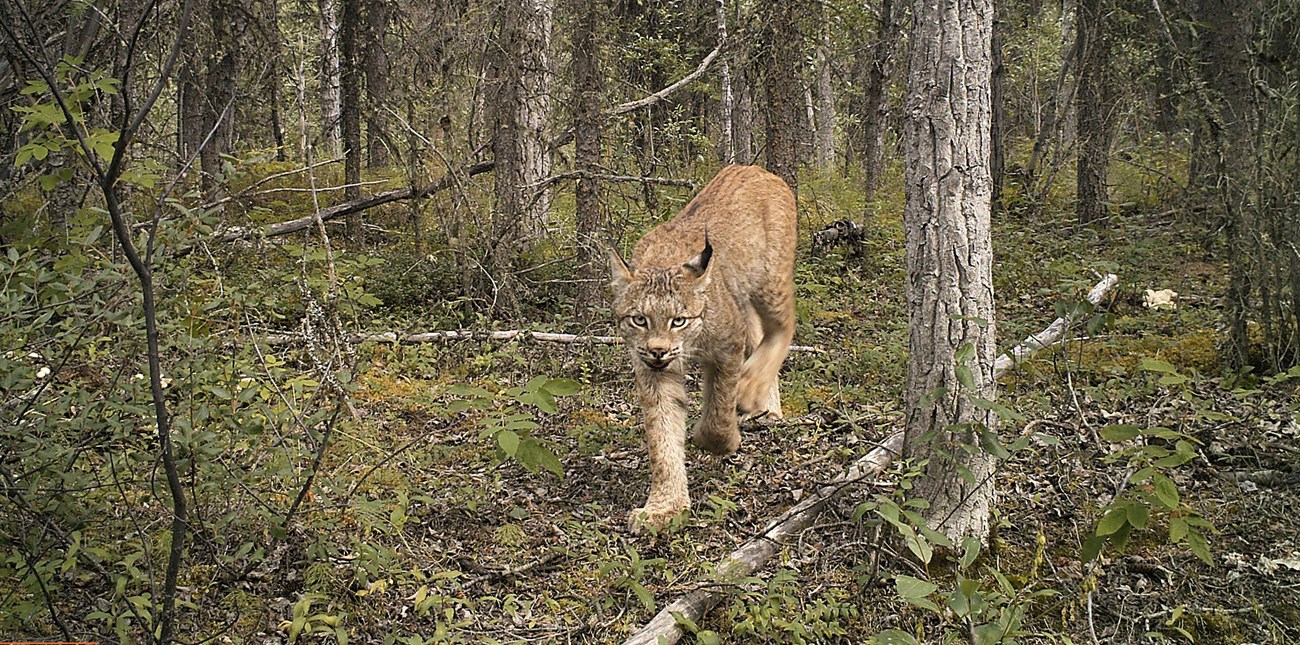
NPS Photo The One and OnlyLynx (Lynx canadensis) is the only member of the cat family native to Alaska. While lynx are generally thought to be solitary, new research in Alaska suggests that male and female lynx socialize outside the breeding season. Lynx are a mesopredator - mid-sized animals that eat other animals. Most adult lynx weigh between 18-30 pounds (8.2-13.6 kg).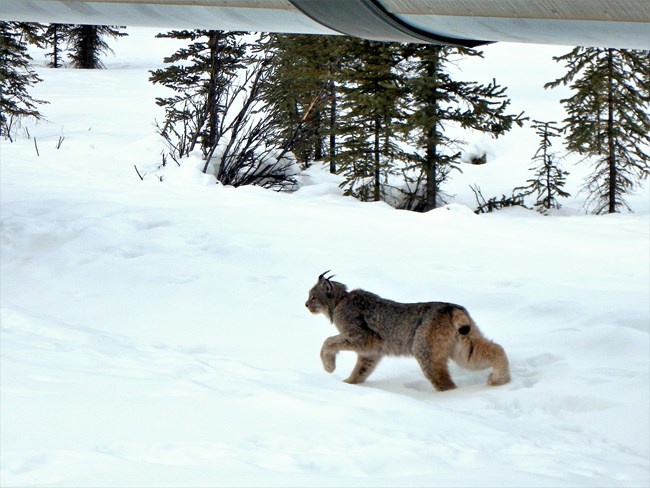
NPS Photo Lynx range throughout the boreal forests of Alaska, Canada, and some of the northern continental United States. While often associated with forested lowland habitats, they also venture into alpine areas for hunting and denning. Lynx are closely related to their Lower 48 cousin, the bobcat. Lynx, however, have longer ear tufts, longer legs and larger paws, a black-tipped tail, and a longer, mostly gray coat. Bobcats, which are more generalist predators than lynx, have shorter, more spotted fur, with a banded tail that is black tipped on top and white underneath. Having luxuriously soft fur, lynx are trapped for their fur in Alaska. It is either kept by the trapper to make into warm garments for themselves, or into handicrafts to sell, while some are sold to the fur industry. 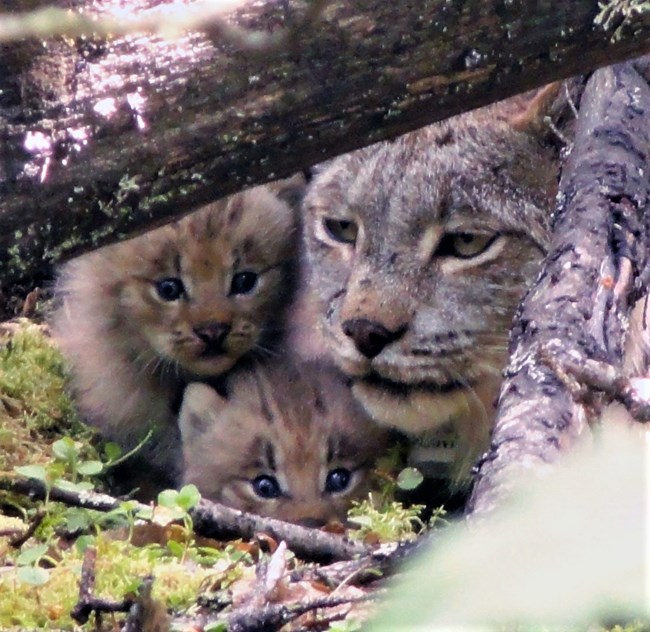
NPS Photo What to eat?A lynx’s favorite food is the snowshoe hare, and lynx populations are closely tied to snowshoe hare populations. More hares mean more lynx, but more lynx mean less hares. When the hare population peaks, lynx numbers reach peak levels a couple years later. Once hare populations crash from predation and over-grazing their food sources, lynx numbers also plummet. This is called a numerical response, when a predator’s population density is directly tied to a prey’s population density.
Female lynx typically have litters of 3-5 kittens, giving birth in early June.. When hares are abundant, they may have as many as 8 young; when hares are scarce, they may not produce litters at all, or the kittens do not survive. 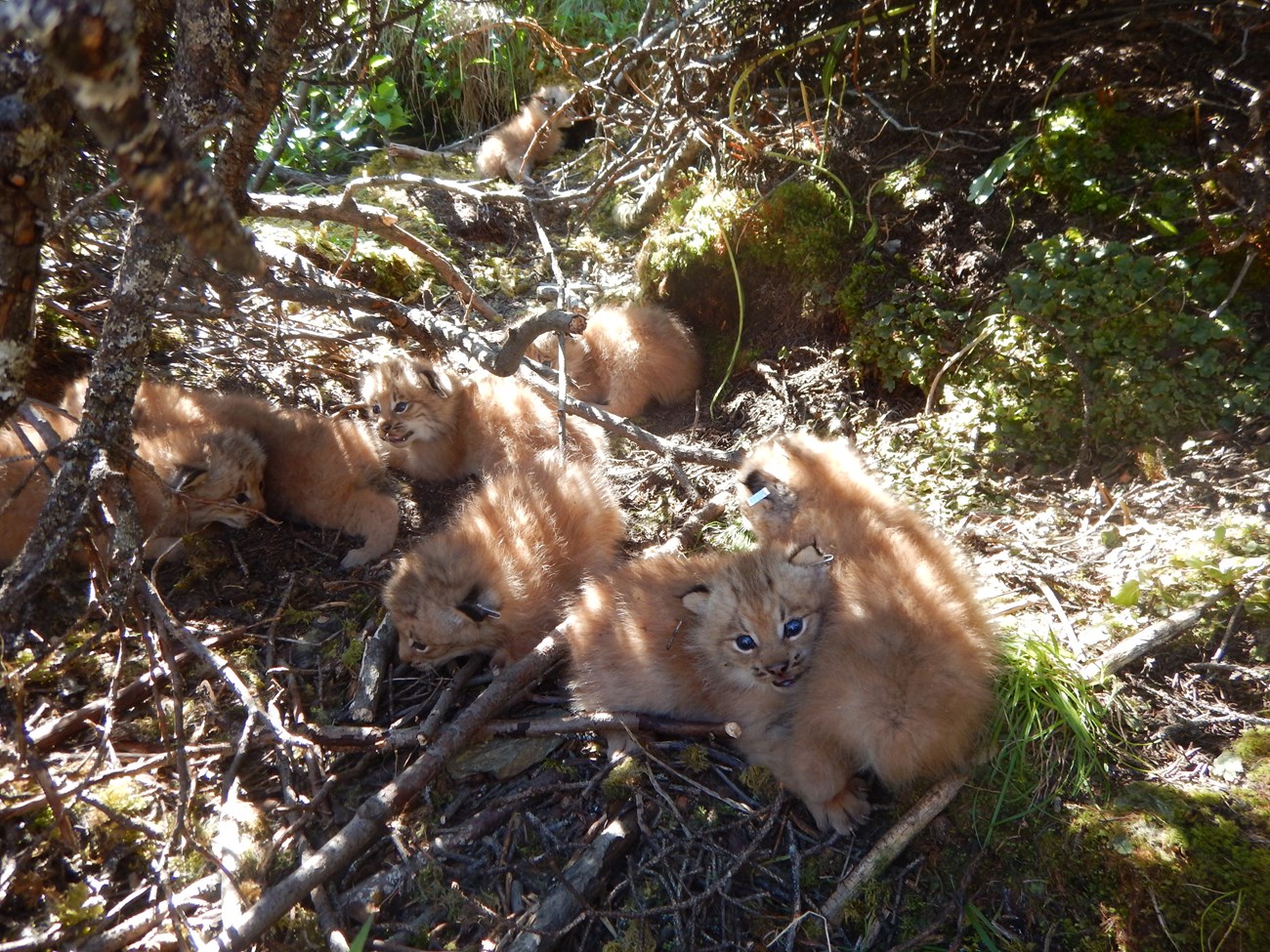
NPS Photo 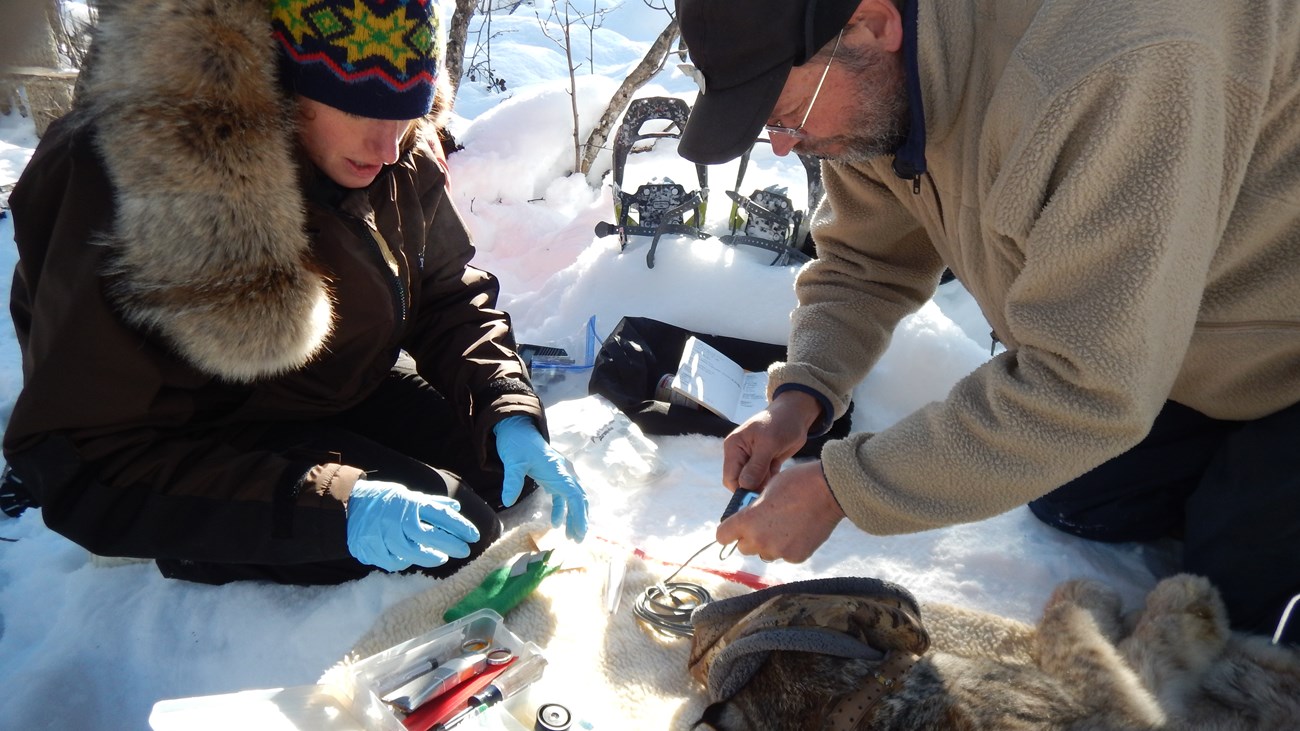
NPS Photo Big MoversOn occasion, lynx move great distances, sometimes travelling hundreds of miles across the landscape into new territory, as shown on the collared lynx dispersal maps below.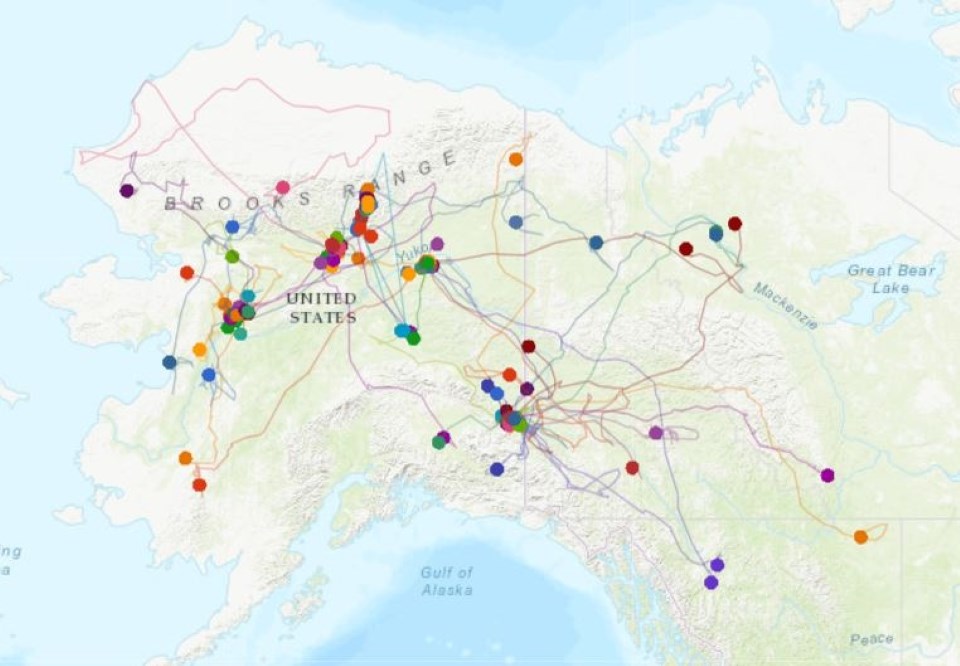
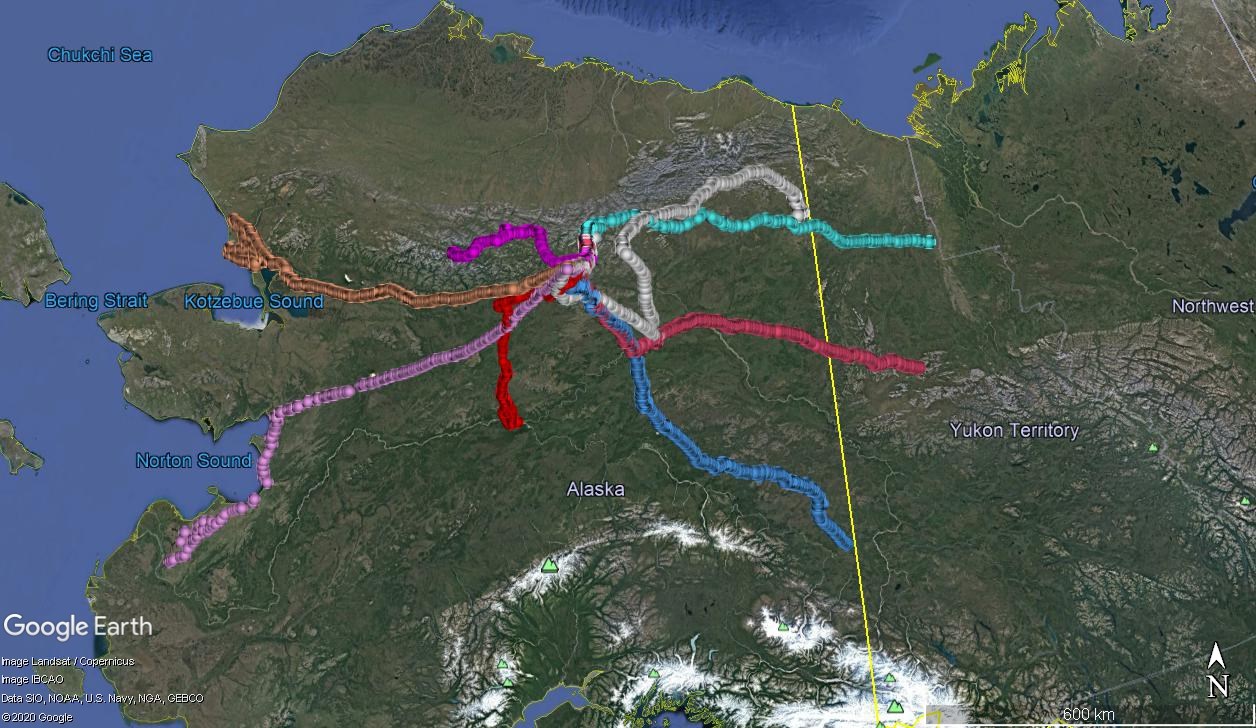
Female lynx originally collared in the Koyukuk/Dietrich valley in the Brooks Range departed the area in April 2020 to travel hundreds of miles east into Yukon Territory, Canada, west to Norton Sound and the Chukchi Sea, and south to the Yukon River. |
Last updated: February 12, 2021
